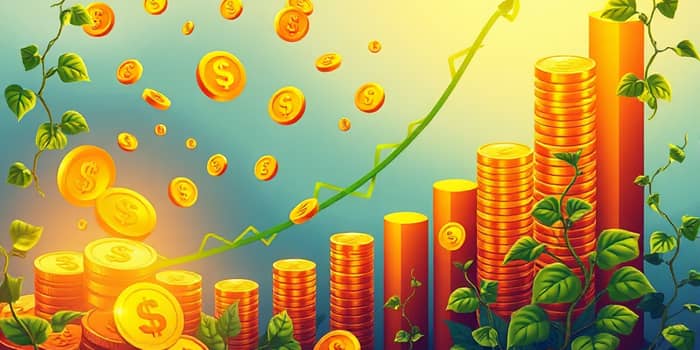Compound interest is often called the eighth wonder of the world, yet many underestimate its transformative potential. By reinvesting earned interest, you unlock a cycle where your wealth can grow at an accelerating rate, turning modest savings into substantial sums over decades.
Definition and Basic Concept
At its core, compound interest is interest calculated on both the original principal and the accumulated interest from prior periods. This creates a feedback loop of value creation that simple interest cannot match.
Put simply, interest you earn on interest layers gains upon gains. Unlike simple interest, which applies a fixed percentage only to the initial amount, compounding ensures that every cycle of interest generation becomes a new base for future calculations.
Key Differences Between Simple and Compound Interest
Understanding how compound interest diverges from simple interest is essential for anyone planning their financial future. While simple interest grows in a straight line, compound interest follows an upward-curving trajectory.
The Formula and Calculation Examples
The mathematical expression for compound interest is:
A = P(1 + r/n)^(n t), where:
- A is the final amount after t years
- P is the principal or initial investment
- r is the annual interest rate (decimal form)
- n is the number of compounding periods per year
- t is the time in years
Example 1: Investing $10,000 at 2% compounded annually.
• Year 1: $10,000 × 1.02 = $10,200
• Year 2: $10,200 × 1.02 = $10,404
• After 10 years: approximately $12,190
• After 20 years: approximately $14,859
Example 2: £1,000 at 10% compounded annually.
• Year 1: £1,100
• Year 2: £1,210
• Year 3: £1,331
The Power of Compounding
Over extended periods, compounding transforms modest contributions into significant wealth. The secret lies in time: the longer you leave funds untouched, the more dramatic the growth becomes.
Leveraging exponential growth accelerated by time means that even small regular deposits can yield impressive results decades later.
- Early investment magnifies final returns.
- Each reinvestment cycle elevates your base amount.
- Frequent compounding boosts overall yield.
Real-World Applications
Compound interest underpins many financial products and natural phenomena. Recognizing these applications helps you harness or guard against its effects.
- Savings accounts and certificates of deposit reinvest interest to reward patience.
- Dividend reinvestment plans automatically apply earnings to purchase more shares.
- Credit card balances can balloon if unpaid, demonstrating how debt also compounds.
Advantages and Disadvantages
While compound interest can be a powerful ally, it comes with caveats. Using it wisely requires awareness of both its benefits and potential pitfalls.
Advantages:
• Accelerates wealth building without ongoing effort once set up. Passive income grows steadily as interest reinvests.
• Maximizes long-term returns when market conditions and rates are favorable.
• Encourages disciplined saving and long-range planning.
Disadvantages:
• Can make debt repayment harder if balances grow faster than payments.
• High-interest loans or credit cards can trap borrowers in escalating cycles of debt.
• Significant benefits often require years or decades, which can feel slow in the short term.
Practical Tips for Maximizing Compound Interest
Adopting strategies to harness compound interest effectively can supercharge your financial journey.
- start early and invest regularly to give interest more time to grow.
- reinvest all earnings instead of withdrawing any gains.
- more frequent compounding increases final earnings, so compare APYs for best results.
- maximize benefits with regular contributions, even small amounts add up dramatically.
- Monitor fees and rates to ensure they don’t erode growth.
By combining these tactics, you can leverage compound interest to build a robust financial future. Remember, consistency and patience are your greatest allies in this process.
References
- https://www.investopedia.com/terms/c/compoundinterest.asp
- https://www.investor.gov/additional-resources/information/youth/teachers-classroom-resources/what-compound-interest
- https://www.consumerfinance.gov/ask-cfpb/how-does-compound-interest-work-en-1683/
- https://en.wikipedia.org/wiki/Compound_interest
- https://byjus.com/maths/compound-interest/
- https://www.home.saxo/learn/guides/financial-literacy/compound-vs-simple-interest-whats-the-difference-for-your-investments
- https://www.westernsouthern.com/investments/how-does-compound-interest-work
- https://www.equifax.co.uk/resources/loans-and-credit/explaining-compound-interest.html










